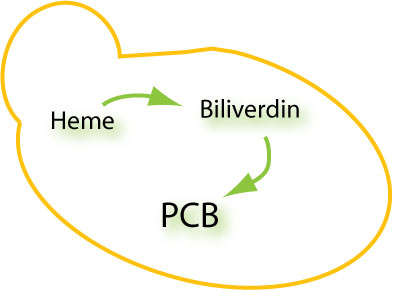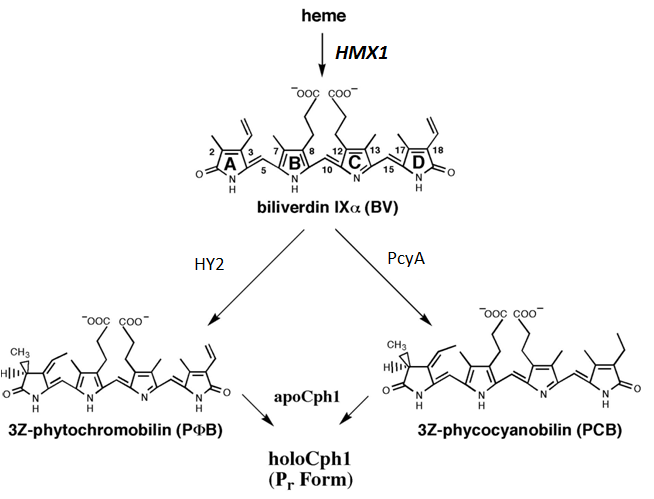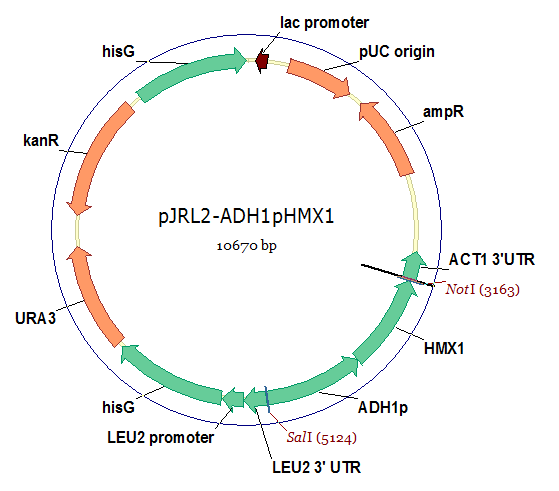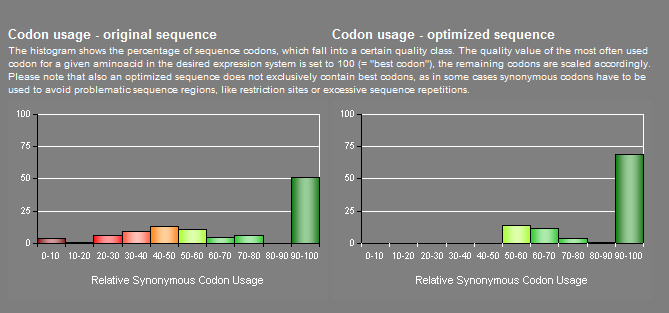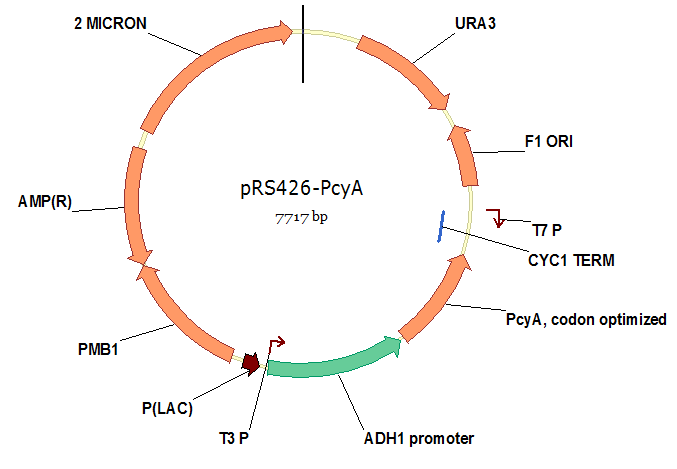Team:MIT/Projects/Project1
From 2009.igem.org
Metabolic Engineering of PCB Synthesis in Yeast
Background
Phycocyanobilin (PCB) is a chromophore essential for association of two proteins, the phytochrome PhyB and the integrating factor PIF3. PCB has two conformations: active and inactive. In the inactive Pr conformation, PCB has the ability to absorb red light at a wavelength of 680 nm. Once PCB absorbs red light, it switches to the active Pfr conformation and enables enables PhyB to bind to PIF3. In the Pfr conformation, PCB has the ability to absorb near infrared light, at a wavelength of 720 nm. Once PCB absorbs the near infrared light, it switches back to the inactive Pr conformation and causes dissociation of PhyB and PIF3.
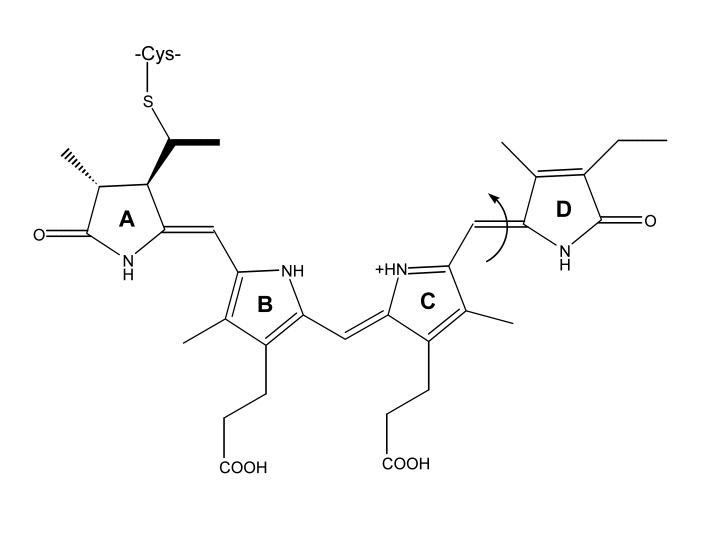
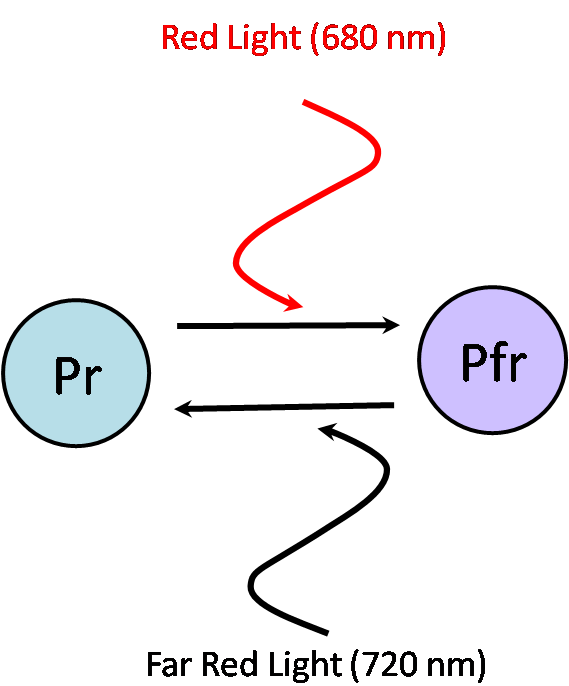
The synthesis pathway of PCB begins with Heme to biliverdin (BV) then to PCB. Our main goal is to create a strain of yeast that has the enzymes to be able to progress down the synthesis pathway as shown below.
Project Design
As mentioned above, PCB plays a crucial part in the PhyB-PIF3 system. We wanted to make this process self-sufficient. Therefore if the yeast was able to synthesize the PCB itself, it would not have to always be supplemented. As shown in the image below, phycocyanobilin (PCB) plays a crucial part in the PhyB-PIF3 system. Once PCB is in the active conformation it allows the phytochrome (PhyB) to bind to the integrating factor (PIF3). This image represents an experiment completed by the Quail lab at UC Berkeley, and is actually the basis of our functional assay.
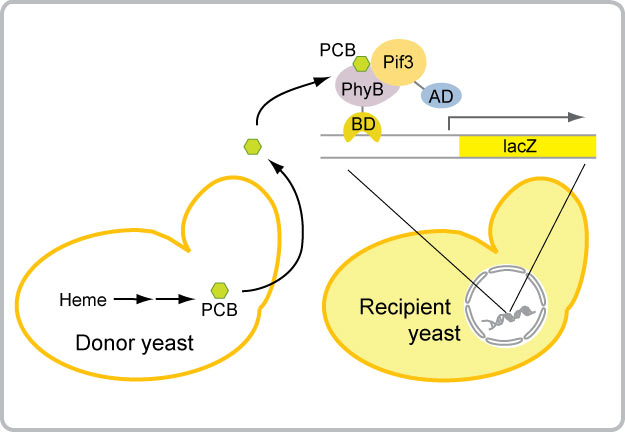
Methods and Results
Developing the Standard: PCB from Spirulina
We decided to use a standard used in many other experiments involving phytochromes. Phycocyanobilin (PCB) extracted from Spirulina is a commonly used standard, as Spirulina produces a large amount of chromophores. We used Spirulina which was bought at Vitamin World as it is commonly used as a dietary supplement.
Chromophores have a very high absorbance around 680nm. A model of what the absorbance spectrum should look like is on the left, while the actual absorbance spectrum of PCB extracted from Spirulina following the protocol that the Quail Lab used, is on the right.
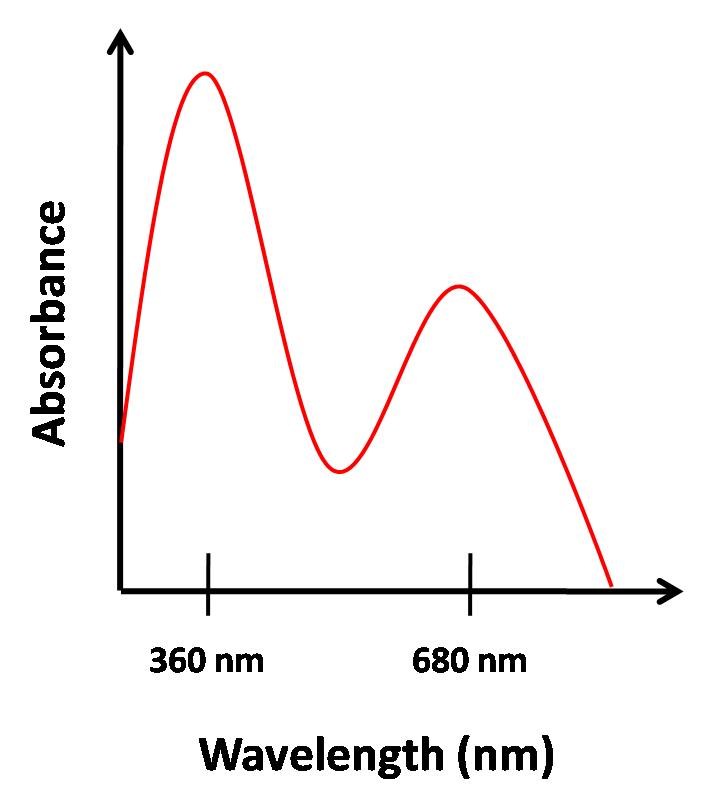
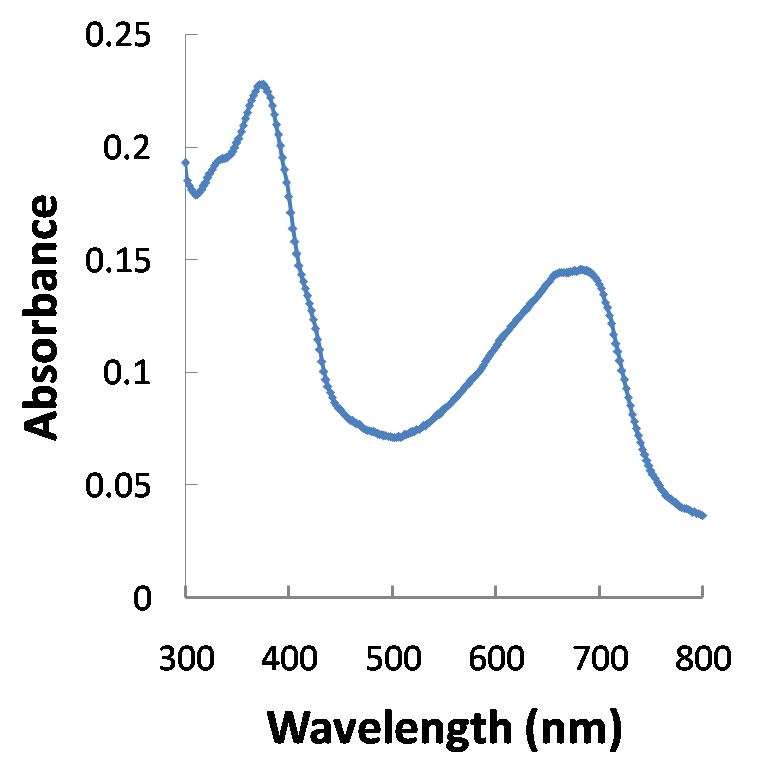
We were able to get a concentration of 11.214 mM in a 4.5 mL solution.
Engineering the PCB Synthesis Pathway into Yeast
HMX1 is a gene that we found that yeast already has. Enough BV is unfortunately not produced due to the fact that HMX1 is only transcribed under iron starvation conditions. For that reason we decided PCR HMX1 out of the genome and then place it on a plasmid with a much more powerful promoter, the promoter for ADH1. This plasmid is seen below.
The gene that we decided to follow was the PcyA gene, from the Synechocystis sp. genome. After looking at the codon usage charts for baker's yeast, and realized that we would need to do codon optimization to more effectively produce this enzyme in baker's yeast. The codon usage comparisons of PcyA before and after codon optimization, as done by GeneART, is seen below.
We synthesized this optimized PcyA using GeneART, and then cloned it into the plasmid, as shown below.
With these two plasmids, we were planning to transform these into a yeast strain with the proper plasmids to be able to complete the functional assay. Unfortunately, there were a lot of problems in creating this functional strain, therefore we were unable to test whether or not these enzymes worked in yeast strain. Yeast would produce PCB at such a lower level in comparison to Spirulina we can not isolate PCB using the same protocol. Therefore the functional assay is needed to see if yeast was being created or not.
 "
"
